When I first started reading art comics, Ron Regé’s work was a cipher to me. I didn’t get what he was doing, and I didn’t really know what to do with it. But there was always something magnetic about his comics – despite not understanding why, I kept coming back to his work. That magnetism, or perhaps just a bullheaded stubbornness on my part, has paid handsome dividends, because Regé’s latest comic, The Weaver Festival Phenomenon, is likely one of the strongest comics published in 2018 thusfar.
The Weaver Festival Phenomenon is based on a novella by Banana Yoshimoto entitled Moonlight Shadow. The novella was included in Yoshimoto’s first book published in English, Kitchen, which was published in 1993. (you can borrow the book on hoopla, if you’re so inclined) Adapting the work into a comic is an interesting choice; Kitchen is one of Yoshimoto’s most popular books, but the story is a full 30 years old at this point. I’m not sure why Regé decided to adapt Moonlight Shadow, but I appreciate the decision – through his adaptation, I’ve learned about Yoshimoto and have been able to read more of her work, which is quite wonderful.
The Weaver Festival Phenomenon features Satsuki, a young woman who is mourning the loss of her long-term boyfriend Hitoshi. Satsuki, we learn, has taken up running in the early morning in order to help forget Hitoshi, who died in a car accident a few months earlier. With her in the cycle of mourning is Hitoshi’s little brother, Hiiragi. Hiiragi is mourning both his brother’s death, and the death of his girlfriend Yumiko. Both Hitoshi and Yumiko were killed in a car accident on a bridge that crosses a major river that splits the city they live in. When Satsuki meets a mysterious woman named Urara while out running, her world drifts closer towards the unreal as she tries to find closure in Hitoshi’s death.
The Weaver Festival Phenomenon is a 64-page hardcover and its most notable feature is its inky blackness. The cover is a sea of black with a small island on the cover; the panels of each page swim in all-black margins. The effect makes each page feel like a real world floating on top of a shadow world, and we see that inclination bubble up in the text of the book. Even opening the book feels like an invitation to the paranormal. It’s clear that both Moonlight Shadow and The Weaver Festival Phenomenon stand on the edge of the unworldly. Early in the book, Satsuki develops rituals to maintain her precarious grip on humanity. Later, as Satsuki reflects on her grief, she says, “I’ll probably be dragged even deeper into this darkness, but I have no choice” There’s a collective unease throughout the book amplified by Regé’s book design.
During her mourning, Satsuki starts losing weight and gets sick with a fever – this sickness is a major theme throughout The Weaver Festival Phenomenon. As a metaphor for mourning, fever feels especially apt. The heat of it smothers you, and gets worse and worse. The whole world feels cold although you are burning up. But when the fever breaks, you can see clearly again, and the world feels alive again. You aren’t the same, you aren’t strong, but you’re able to move forward. The mystical Urara visits Satsuki during the depths of her fever, and tells her, “Now is the hardest time. Maybe even harder than dying… you might come to fear the next time you get a cold; it will be as bad as this, but if you just hold steady, it won’t be.” That tracks.
Regé’s adaptation of Moonlight Shadow takes very few liberties, but as The Weaver Festival Phenomenon, it feels like a completely different story. While Yoshimoto’s text has an air of the supernatural, Regé’s interpretation amplifies the ghostly, eerie quality of the story into something more divinely ordained. Regé’s illustration often feels holy, with all things visible in light of some divine power. In the depths of Satsuki’s fever, sweat drops and red lines surround her head like a halo in medieval illustration of figures like Mother Mary. At the end of The Weaver Festival Phenomenon, Satsuki finds closure at the bridge where she lost her lover. Visually, her tracksuit changes – from white and blue stripes to pure white, a symbolism not lost in the busy detail of Regé’s illustration. At the end of the book, Satsuki she issues a final prayer to the departed Hitoshi- “I earnestly pray that a trace of my girl-child self remains always with you.” Because of this Regé’s adaptation feels like a story of resurrection as much as a story of remembrance and grief. While The Weaver Festival Phenomenon is more straightforward than Regé’s usual work, it still fits nicely into his esoteric oeuvre. And his style is perfect for this story – where all things seem possible under divine influence, his thin line emphasizes the infinity of the experiences within The Weaver Festival Phenomenon.
Ultimately, Regé’s adaptation of Moonlight Shadow manages to thread a difficult needle – it remains true to Banana Yoshimoto’s fiction, but brings to her story Regé’s unique mystical worldview. The Weaver Festival Phenomenon is a sad but hopeful story, brought to life through Regé’s art – a balm for what ails in these dark times.
Sequential State is made possible in part by user subscriptions; you subscribe to the site on Patreon for as little as a dollar a month, and in return, you get additional content; it’s that simple. Your support helps pay cartoonists for illustration work, and helps keep Sequential State independent and ad-free. And if you’re not into monthly subscriptions, you can also now donate to the site on Ko-Fi.com. Thanks!

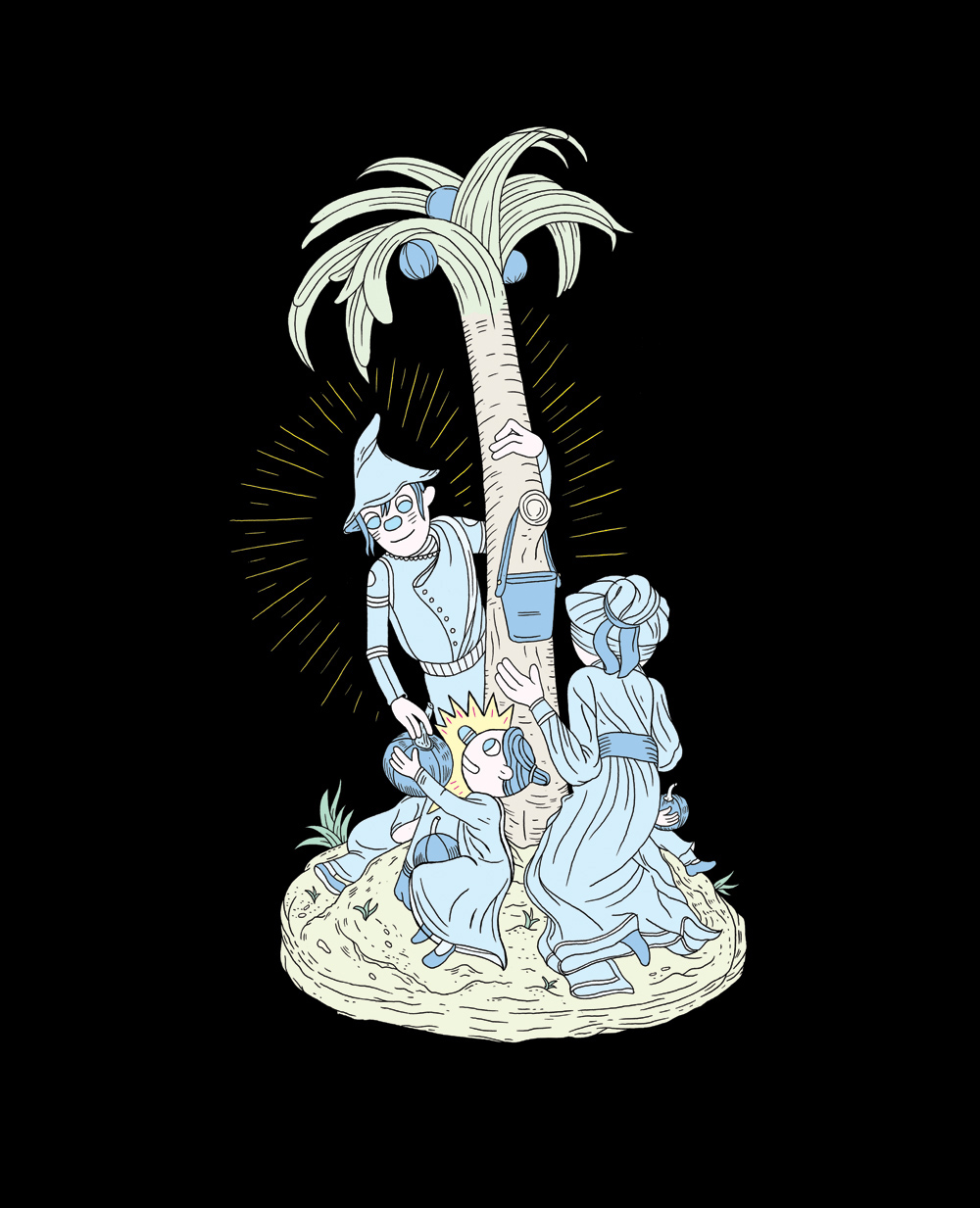
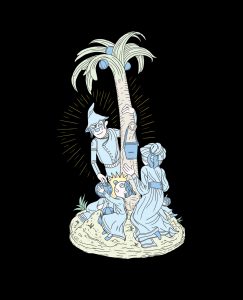
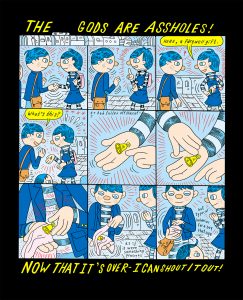
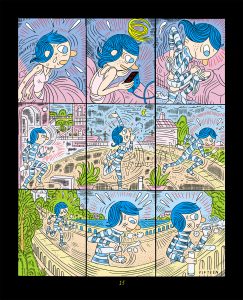
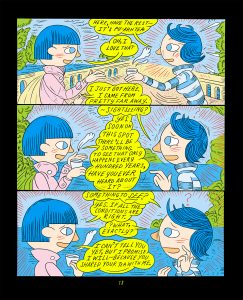
One response to “Review: The Weaver Festival Phenomenon by Ron Regé”
[…] of his work thusfar, a brilliant adaptation of Banana Yoshimoto’s novella Moonlight Shadow. I reviewed this book earlier this year, so please take a look at that review for more details. But I will say this – The Weaver […]